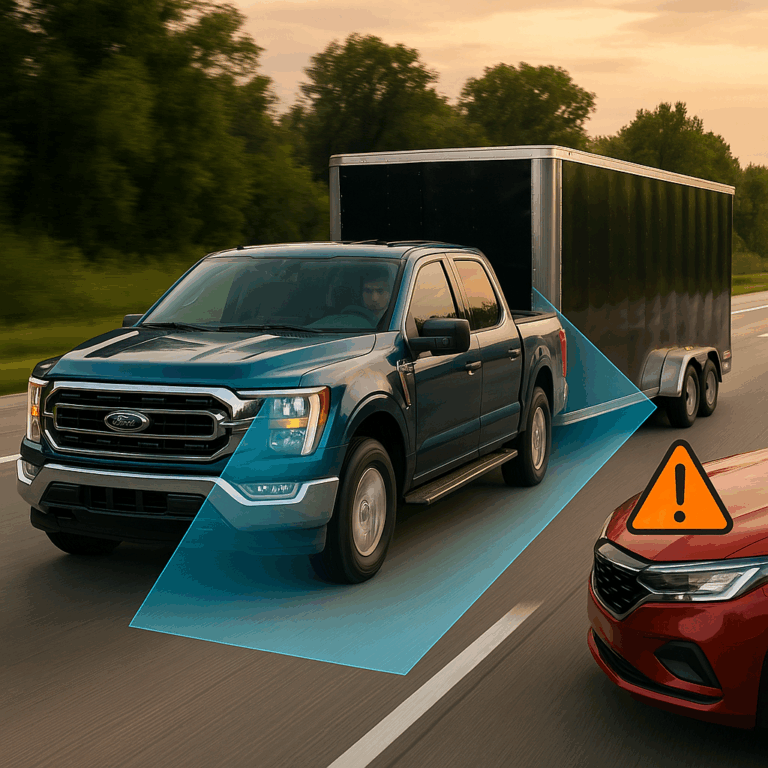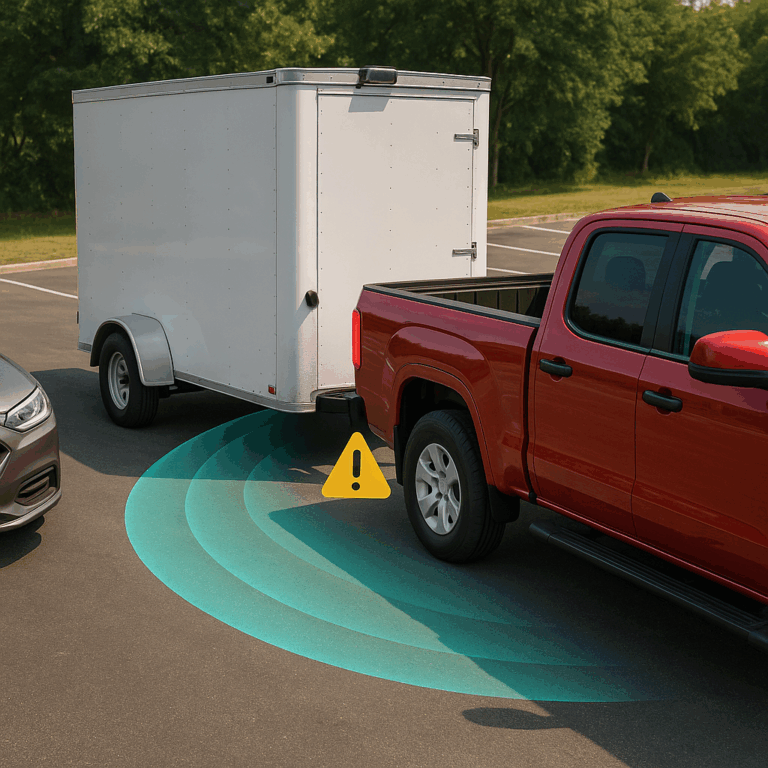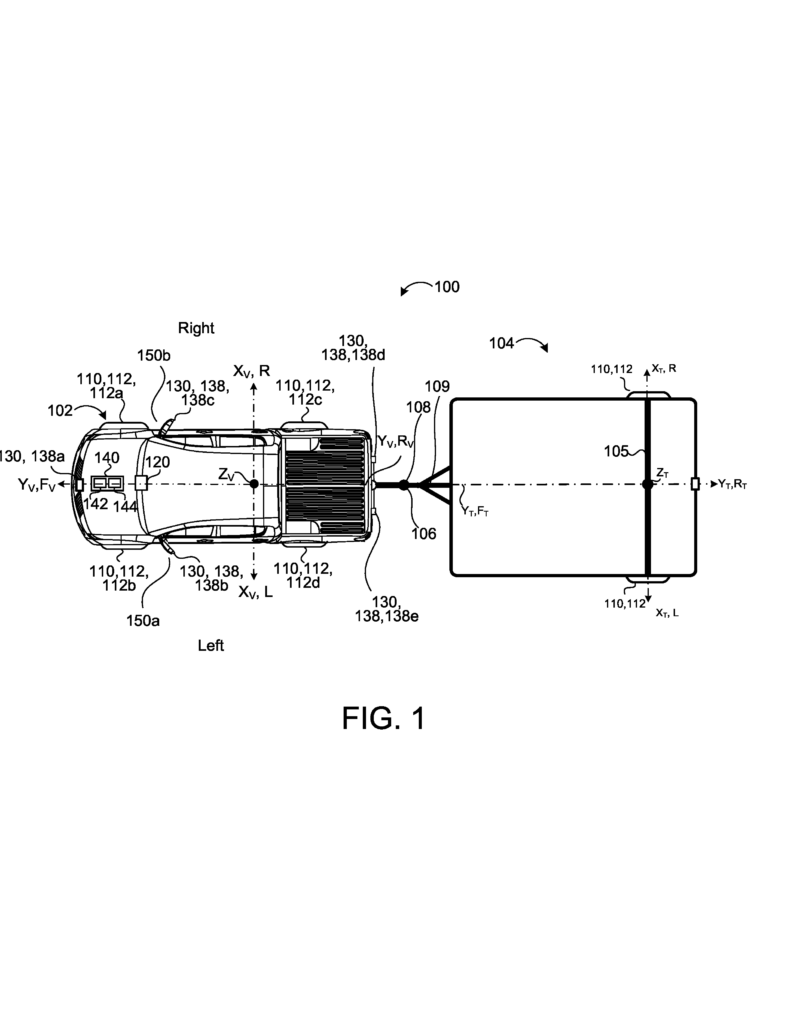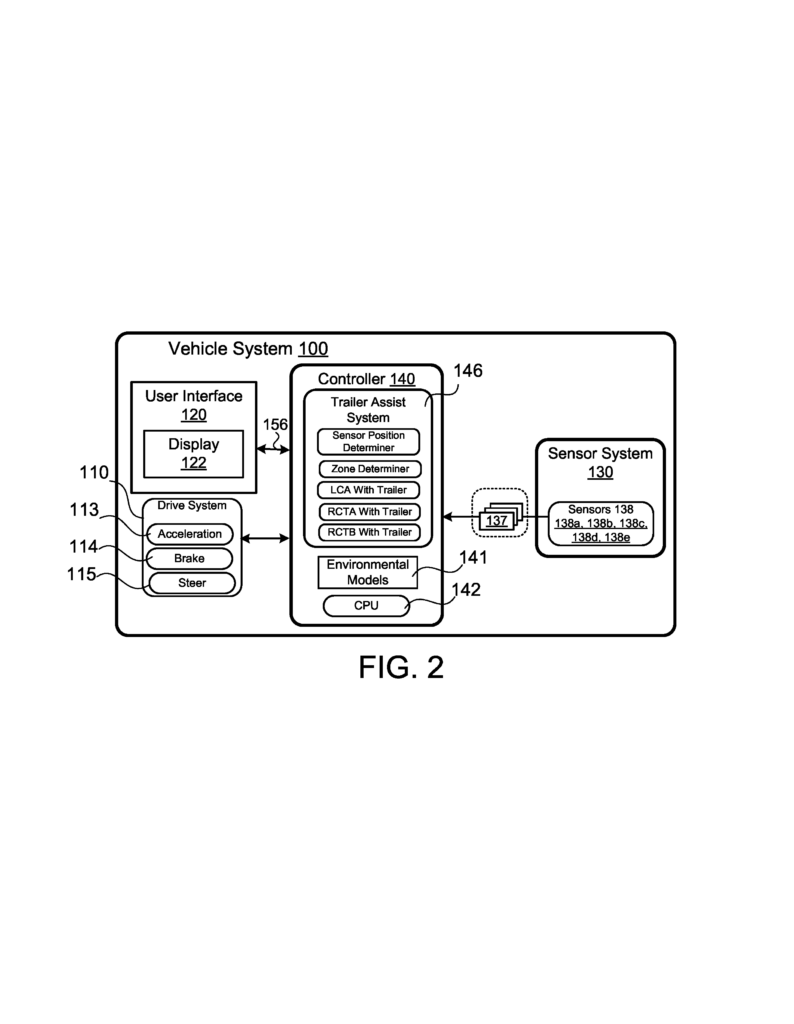Invented by Pagot; Adam Roger, Chui; Vincey, Continental Autonomous Mobility US, LLC

When you drive a big truck pulling a trailer, changing lanes or backing up can be scary. There are blind spots, big trailers block your view, and sometimes you just can’t see if another car is near you. That’s why trailer assist systems matter so much. Let’s explore a remarkable patent application that promises to make towing much safer and much easier for everyone.
Background and Market Context
Towing a trailer is never simple. When you hook a trailer to your pickup, SUV, or van, the whole driving experience changes. Your vehicle becomes much longer, much wider, and much harder to see around. Even experienced drivers can get nervous about merging, changing lanes, or backing into tight spaces. These challenges are even worse if the trailer is wide, like a gooseneck or fifth wheel.
In recent years, more families, businesses, and adventurers are choosing to tow. The rise in RV travel, small business deliveries, and outdoor sports has made towing a part of everyday life for many people. Car makers are responding by adding new towing features to their vehicles. These include backup cameras, warning beeps, and even some early self-driving features.
One of the most important safety features is the trailer merge warning (TMW) system. This system warns the driver if another car is in the next lane when the truck or SUV wants to move over. It uses sensors on the back of the vehicle to watch for cars nearby. If it sees a car and the driver signals a lane change, it beeps or flashes a light to say, “Don’t move over, there’s a car there!”
But there’s a problem. If you are towing a wide trailer, the sensors on the back bumper can’t “see” around the trailer. The trailer itself blocks the view. If another car is in that blind spot, the system might not warn you in time. This can lead to near misses or even crashes. As trailers get wider and towing gets more common, this gap in safety becomes a bigger concern.
Drivers want more peace of mind. Insurance companies want fewer accidents. Car makers want to offer the safest, smartest features. The market is hungry for a better solution that works even when towing big, wide trailers. That’s where this new patent application comes in. It offers a new way to help drivers see what’s happening around their trailer, no matter how big it is.
Scientific Rationale and Prior Art

To understand why this invention is special, let’s look at how similar systems work today, and why they fall short.
Traditional trailer assist systems often rely on radar sensors placed on the back bumper of the towing vehicle. These sensors send out signals that bounce off nearby objects, like other cars. When the signals come back, the system calculates how far away those objects are and whether they are moving closer. If another car is detected, the system can warn the driver by making noise or flashing a warning on the dashboard. Some systems can even alert the driver if a car is about to cross behind the trailer when backing up.
This approach works fine if the trailer is narrow, or if it sits far enough behind the truck that it doesn’t block the sensors’ view. But when you attach a wide trailer, especially one that sits close to the back of the truck, the sensors can’t “see” around it. Their signal is blocked. This leaves a part of the area next to the trailer—a zone where another car might be driving—completely hidden. The system is blind, and so is the driver.
Automakers have tried to solve this in a few ways. Some use extra sensors on the sides of the vehicle. Others use cameras mounted high on the back of the trailer. Some systems try to estimate where cars might be, based on the last time a sensor saw them. But all of these fixes have problems. Side sensors can still be blocked. Trailer-mounted cameras need power and can be hard to keep clean. Guesswork can’t match the accuracy of a real sensor.
There are also systems that let you enter the size and shape of your trailer into the dashboard, so the sensors can try to “guess” where the blind spots are. But these only help a little, and they don’t solve the core problem: blocked sensors mean blocked vision.
This means that for many drivers, especially those towing wide trailers, current technology just isn’t good enough. They still have to take risks when changing lanes or backing up. Even the best current systems can’t give full, reliable protection.
The new patent application takes a fresh approach. Instead of relying only on sensors at the back, it puts new sensors on the sides of the tow vehicle, such as on the side mirrors. Because the sensors are farther from the trailer, they can see the area next to the trailer much better. This idea is both simple and powerful.

The system does not just move the sensors; it also uses smart technology to figure out where the sensors are, how they are pointed, and what they can see. If the side mirrors move or rotate, the system knows and adjusts its “mental map” of the world. This means the system always knows where its blind spots are, and can warn the driver or even help control the vehicle to avoid a crash.
This approach builds on ideas from prior art, but adds several key innovations. It combines side-mounted sensors, smart sensor tracking, and advanced data fusion to create a much more reliable, flexible, and accurate trailer assist system. It’s designed to work with wide trailers, different mirror positions, and even changing driving situations.
Invention Description and Key Innovations
Now, let’s look closely at how this new trailer assist system works, and the unique features that set it apart.
At its heart, the system uses sensors placed along the sides of the tow vehicle, especially on the side mirrors. Some versions use only these side sensors. Others use both side and rear sensors, combining their information for even better coverage. The sensors can be radar, cameras, or other types that can detect objects nearby.
The big difference is where these sensors are placed. By putting them on the side mirrors, and especially at the far end of the mirror (away from the truck’s body), the sensors get a much better view of the area next to the trailer. Even if the trailer is very wide, the sensors can “see” around it. This means the system can watch the key danger zones—the spots where another car might try to pass or drive close to your trailer.
But just placing sensors isn’t enough. Mirrors can move. Drivers often adjust their side mirrors, either by sliding them out to see farther or by rotating them for a better angle. When the mirror moves, the sensor moves too. If the system doesn’t know this, its warnings could be wrong.
The invention solves this by keeping track of the mirror’s position. Each mirror assembly can have a position sensor built in, telling the system exactly where the mirror (and the sensor) is at all times. The system stores several “environmental models” in its memory. Each model knows what the world looks like from a certain sensor position. When the mirror moves, the system switches to the right model. This way, it always knows what areas are visible and which are blind.

When the driver is towing a trailer, the system:
1. Gets live data from the side sensors about the area next to the truck and trailer.
2. Figures out exactly where each sensor is, based on mirror position.
3. Picks the right environmental model for that sensor position.
4. Defines a “zone” next to the truck and trailer to watch for other vehicles. This zone stretches along the side and behind the trailer.
If the system detects another car in this zone—or even just approaching it—it can act. It can warn the driver with beeps, flashes, or messages on the dashboard. In some cases, it can even send commands to the brakes or steering to help avoid a crash. For example, if you try to merge into the next lane and a car is there, the system might gently steer you back or stop the vehicle.
In more advanced versions, the system combines data from both side and rear sensors. It uses smart software to “fuse” the information, making a more complete picture of what’s happening around the trailer. This is especially useful for lane changes, backing up, or driving in busy parking lots.
The invention can also use machine learning and artificial intelligence to get better over time. It can learn how trailers of different shapes and sizes affect blind spots. It can even classify what kind of object it sees—a car, a bike, a pedestrian—which makes its warnings more accurate.
All of this happens automatically. The driver does not have to do anything special. The system monitors the sensors, tracks the mirror positions, chooses the right settings, and keeps watch over the danger zones. The driver just drives, with extra help and safety all the time.
What makes this invention truly special is how it solves several problems at once. It gives better coverage for wide trailers, adapts to changes in sensor position, and uses advanced data fusion for the most complete picture possible. It can work with different types of vehicles, trailers, and sensors. It’s flexible, smart, and highly practical.
In summary, the key innovations are:
– Placing sensors on the side mirrors for a wider, less blocked view.
– Tracking mirror and sensor position, and adjusting the system in real-time.
– Using stored environmental models to always know what areas are covered.
– Defining and monitoring safety zones next to the trailer.
– Combining side and rear sensor data for full coverage.
– Using AI and machine learning to improve detection and classification.
– Sending warnings or taking control actions to prevent accidents.
These features make the system a major step forward in trailer safety. It’s designed to address real problems that drivers face, using smart, practical solutions.
Conclusion
Towing a trailer does not have to be stressful or risky. With smart technology like this new trailer assist system, drivers can enjoy greater peace of mind and safety. By moving sensors to the sides, tracking their position, and combining data in clever ways, this system overcomes the biggest weaknesses of older trailer assist features. It gives drivers reliable warnings and, when needed, helpful assistance to avoid collisions.
The market for towing safety is growing fast, and this invention shows where the future is headed. It’s smart, flexible, and ready for the real world. Whether you are a weekend camper, a small business owner, or just someone who wants to tow safely, systems like this will make your journey easier and safer. It’s a great example of how new ideas and thoughtful engineering can solve everyday problems in a way that really matters.
As car makers keep adding more sensors and smarter controls, the road will become a safer place for everyone who tows. This patent application sets a new standard and opens the door for even more helpful features down the road.
Click here https://ppubs.uspto.gov/pubwebapp/ and search 20250232674.
